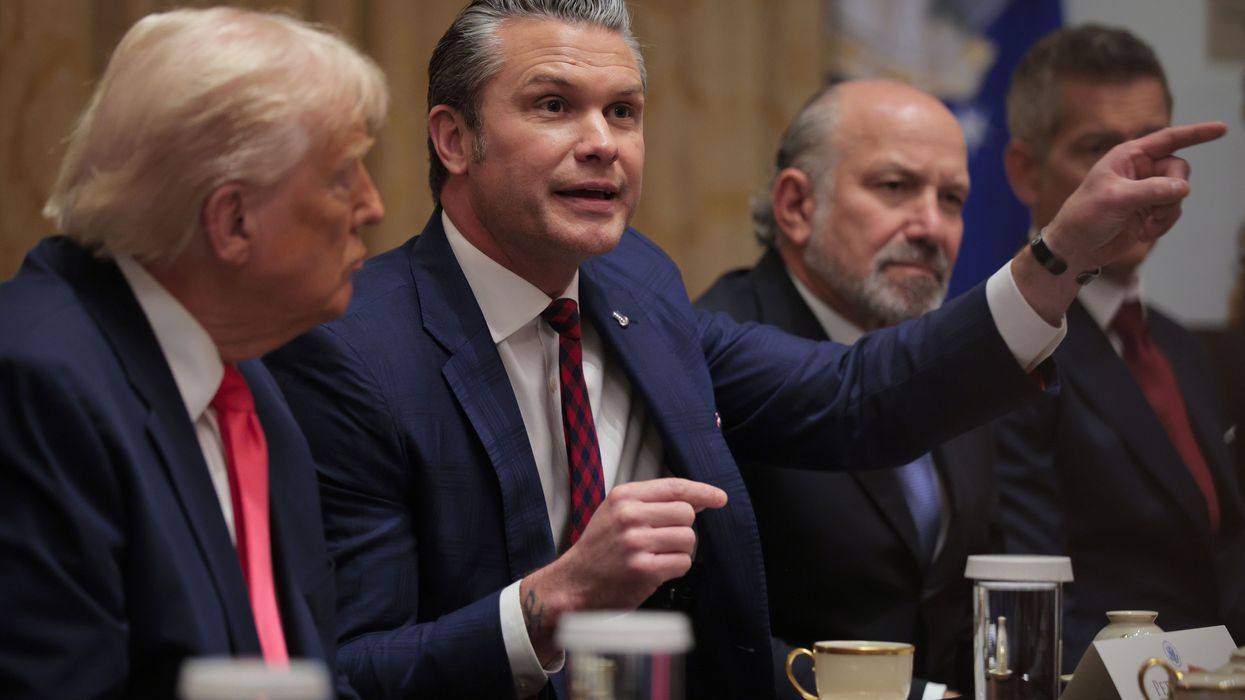April, 27 2022, 02:23pm EDT

For Immediate Release
Contact:
Ashley Siefert Nunes with UCS, asiefert@ucsusa.org, Maddie Rocklin with Woodwell Climate, maddie@ninetywest.com
Wildfires in US, Canadian Boreal Forests Could Release Sizable Amount of Remaining Global Carbon Budget
New Science Advances Study Finds Reducing These Emissions Should Be Factored into Fire Management Decisions, Budgets
WASHINGTON
A paper by U.S. scientists published in the peer-reviewed journal Science Advances today finds that fires occurring in U.S. and Canadian boreal forests between now and 2050 could release about 3% of the remaining global carbon budget unless greater investments are made to limit fire size in these carbon-rich forests. The first-of-its-kind study was led by Dr. Carly Phillips, a fellow with the Western States Climate Team at the Union of Concerned Scientists (UCS), and co-authored with a team of researchers from the Woodwell Climate Research Center, Tufts University, Harvard University, the University of California, and Hamilton College.
The latest scientific report by the Intergovernmental Panel on Climate Change (IPCC) makes clear that countries have a quickly narrowing window to rein in heat-trapping emissions. To meet the Paris Agreement's principal goal of limiting warming to 1.5 degrees Celsius to avoid some of the worst climate change impacts, nations need to drastically reduce heat-trapping emissions during this consequential decade and reach net-zero carbon emissions by 2050.
" Wildfires in boreal forests can be especially harmful in terms of the amount of emissions they release into the atmosphere since they store about two-thirds of the world's forest carbon, most of which is contained in the soil and has accumulated over hundreds or even thousands of years," said Dr. Phillips. "If not properly contained, heat-trapping emissions from wildfires in boreal forests could dramatically increase, jeopardizing nations' ability to limit warming in line with the Paris Agreement."
The study found that by midcentury, burned area in Alaskan and Canadian boreal forests is projected to increase as much as 169% and 150%, respectively, releasing nearly 12 gigatons of net carbon emissions--equivalent to the annual emissions of 2.6 billion cars--which represents about 3% of the remaining global carbon budget. These estimates are conservative, as the study did not assess the potential for boreal forest wildfires to accelerate permafrost thaw and other ecosystem processes that could further increase net carbon emissions.
"Governments rightly prioritize rapid suppression of wildfires that occur near heavily populated areas and crucial infrastructure, but allow other areas that hold large amounts of carbon to burn-a practice hazardous to the health and safety of communities in Alaska, Canada and beyond," said Dr. Peter Frumhoff, a research scientist at Harvard University's Center for the Environment and a co-author of the study. "Expanding fire management to keep wildfires near historical levels across boreal North America would provide multiple benefits and leave us far better positioned to meet the goals of the Paris Agreement."
Despite contributing an outsized share of carbon emissions, U.S. and Canadian boreal forests are given disproportionately small amounts of funding for fire suppression efforts. Alaska, for example, accounts for roughly 20% of burned land area and half of U.S. fire emissions annually, yet only receives about 4%, on average, of federal fire management funding. The study found the average cost of avoiding the emission of 1 ton of carbon dioxide was about $12, a cost comparable to or below that of other measures to mitigate climate change. In Alaska, that would mean investing an average of $696 million per year over the next decade to keep the state's wildfire emissions at historical levels.
"Reducing boreal forest fires to near-historical levels and keeping carbon in the ground will require additional investments," said Dr. Brendan Rogers, an associate scientist at Woodwell Climate Research Center and co-author of the study. "These funds are comparatively low and pale in comparison to the costs countries will face to cope with the growing health consequences exacerbated by worsening air quality and the more frequent and intense climate impacts that are expected if emissions continue to rise unabated. They can also ensure wildlife, tourism, jobs, and many other facets of our society can persevere in a warming world."
A corresponding UCS fact sheet is available here. Related blog posts by Dr. Phillips and by Dr. Rogers are also available.
More information can be found online in the Science Advances press package at eurekalert.org. Reporters will need their user ID and password to access the information.
The Union of Concerned Scientists is the leading science-based nonprofit working for a healthy environment and a safer world. UCS combines independent scientific research and citizen action to develop innovative, practical solutions and to secure responsible changes in government policy, corporate practices, and consumer choices.
LATEST NEWS
Mike Johnson Touts $901 Billion Military Budget Plan After Gutting Medicaid, SNAP
"At such a time, bipartisan agreement to provide additional funds to the Pentagon would deliver a cruel message to the American public," advocacy groups warned.
Dec 08, 2025
Republican congressional leaders unveiled a sprawling military policy bill late Sunday that would authorize $901 billion in US military spending for the coming fiscal year, just months after GOP lawmakers and President Donald Trump pushed through the largest-ever cuts to Medicaid and federal nutrition assistance.
House Speaker Mike Johnson (R-La.), who aggressively pushed cuts to Medicaid by peddling false claims of large-scale fraud, touted the 3,086-page National Defense Authorization Act (NDAA) as legislation that would "ensure our military forces remain the most lethal in the world."
The bill, a compromise between House and Senate versions of the annual legislation, would authorize $8 billion more in US military spending than Trump asked for in his 2026 budget request.
If passed, the 2026 NDAA would pump billions of dollars more into the Pentagon, a cesspool of the kinds of waste, fraud, and abuse that Johnson and other Republicans claim to be targeting when they cut safety net programs, stripping health insurance and food aid from millions. The Pentagon has never passed an independent audit and continues to have "significant fraud exposure," the Government Accountability Office said earlier this year.
"The surge in Pentagon spending stands in sharp contrast to the drastic cuts in healthcare and food assistance programs imposed by the reconciliation package."
Final passage of the NDAA would push total military spending authorized by Congress this year above $1 trillion, including the $150 billion in Pentagon funds included in the Trump-GOP budget law enacted over the summer.
Last month, as Common Dreams reported, a coalition of watchdog and anti-war groups implored Congress not to approve any funding above the originally requested $892.6 billion, warning that additional money for the Pentagon would enable the Trump administration's lawless use of the military in US streets and overseas.
The groups also noted that "the surge in Pentagon spending stands in sharp contrast to the drastic cuts in healthcare and food assistance programs imposed by the reconciliation package."
"At such a time," they wrote in a letter to lawmakers, "bipartisan agreement to provide additional funds to the Pentagon would deliver a cruel message to the American public, one out of step with Democratic messaging over healthcare, reconciliation, and the shutdown."
Keep ReadingShow Less
Billionaire Palantir Co-Founder Pushes Return of Public Hangings as Part of 'Masculine Leadership' Initiative
"Immaturity masquerading as strength is the defining personal characteristic of our age," said one critic in response.
Dec 07, 2025
Venture capitalist Joe Lonsdale, a co-founder of data platform company Palantir, is calling for the return of public hangings as part of a broader push to restore what he describes as "masculine leadership" to the US.
In a statement posted on X Friday, Lonsdale said that he supported changing the so-called "three strikes" anti-crime law to ensure that anyone who is convicted of three violent crimes gets publicly executed, rather than simply sent to prison for life.
"If I’m in charge later, we won’t just have a three strikes law," he wrote. "We will quickly try and hang men after three violent crimes. And yes, we will do it in public to deter others."
Lonsdale then added that "our society needs balance," and said that "it's time to bring back masculine leadership to protect our most vulnerable."
Lonsdale's views on public hangings being necessary to restore "masculine leadership" drew swift criticism.
Gil Durán, a journalist who documents the increasingly authoritarian politics of Silicon Valley in his newsletter "The Nerd Reich," argued in a Saturday post that Lonsdale's call for public hangings showed that US tech elites are "entering a more dangerous and desperate phase of radicalization."
"For months, Peter Thiel guru Curtis Yarvin has been squawking about the need for more severe measures to cement Trump's authoritarian rule," Durán explained. "Peter Thiel is ranting about the Antichrist in a global tour. And now Lonsdale—a Thiel protégé—is fantasizing about a future in which he will have the power to unleash state violence at mass scale."
Taulby Edmondson, an adjunct professor of history, religion, and culture at Virginia Tech, wrote in a post on Bluesky that the rhetoric Lonsdale uses to justify the return of public hangings has even darker intonations than calls for state-backed violence.
"A point of nuance here: 'masculine leadership to protect our most vulnerable' is how lynch mobs are described, not state-sanctioned executions," he observed.
Theoretical physicist Sean Carroll argued that Lonsdale's remarks were symbolic of a kind of performative masculinity that has infected US culture.
"Immaturity masquerading as strength is the defining personal characteristic of our age," he wrote.
Tech entrepreneur Anil Dash warned Lonsdale that his call for public hangings could have unintended consequences for members of the Silicon Valley elite.
"Well, Joe, Mark Zuckerberg has sole control over Facebook, which directly enabled the Rohingya genocide," he wrote. "So let’s have the conversation."
And Columbia Journalism School professor Bill Grueskin noted that Lonsdale has been a major backer of the University of Austin, an unaccredited liberal arts college that has been pitched as an alternative to left-wing university education with the goal of preparing "thoughtful and ethical innovators, builders, leaders, public servants and citizens through open inquiry and civil discourse."
Keep ReadingShow Less
Hegseth Defends Boat Bombings as New Details Further Undermine Administration's Justifications
The boat targeted in the infamous September 2 "double-tap" strike was not even headed for the US, Adm. Frank Bradley revealed to lawmakers.
Dec 07, 2025
US Defense Secretary Pete Hegseth on Saturday defended the Trump administration's policy of bombing suspected drug-trafficking vessels even as new details further undermined the administration's stated justifications for the policy.
According to the Guardian, Hegseth told a gathering at the Ronald Reagan presidential library that the boat bombings, which so far have killed at least 87 people, are necessary to protect Americans from illegal drugs being shipped to the US.
"If you’re working for a designated terrorist organization and you bring drugs to this country in a boat, we will find you and we will sink you," Hegseth said. "Let there be no doubt about it."
However, leaked details about a classified briefing delivered to lawmakers last week by Adm. Frank Bradley about a September 2 boat strike cast new doubts on Hegseth's justifications.
CNN reported on Friday that Bradley told lawmakers that the boat taken out by the September 2 attack was not even headed toward the US, but was going "to link up with another, larger vessel that was bound for Suriname," a small nation in the northeast of South America.
While Bradley acknowledged that the boat was not heading toward the US, he told lawmakers that the strike on it was justified because the drugs it was carrying could have theoretically wound up in the US at some point.
Additionally, NBC News reported on Saturday that Bradley told lawmakers that Hegseth had ordered all 11 men who were on the boat targeted by the September 2 strike to be killed because "they were on an internal list of narco-terrorists who US intelligence and military officials determined could be lethally targeted."
This is relevant because the US military launched a second strike during the September 2 operation to kill two men who had survived the initial strike on their vessel, which many legal experts consider to be either a war crime or an act of murder under domestic law.
Rep. Jim Himes (D-Conn.), the ranking member of the House Permanent Select Committee on Intelligence, watched video of the September 2 double-tap attack last week, and he described the footage as “one of the most troubling things I’ve seen in my time in public service.”
“Any American who sees the video that I saw will see its military attacking shipwrecked sailors,” Himes explained. “Now, there’s a whole set of contextual items that the admiral explained. Yes, they were carrying drugs. They were not in position to continue their mission in any way... People will someday see this video and they will see that that video shows, if you don’t have the broader context, an attack on shipwrecked sailors.”
While there has been much discussion about the legality of the September 2 double-tap strike in recent days, some critics have warned that fixating on this particular aspect of the administration's policy risks taking the focus off the illegality of the boat-bombing campaign as a whole.
Daphne Eviatar, director for security and human rights for Amnesty International USA, said on Friday that the entire boat-bombing campaign has been "illegal under both domestic and international law."
"All of them constitute murder because none of the victims, whether or not they were smuggling illegal narcotics, posed an imminent threat to life," she said. "Congress must take action now to stop the US military from murdering more people in the Caribbean and Eastern Pacific."
Keep ReadingShow Less
Most Popular


